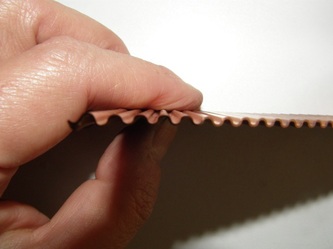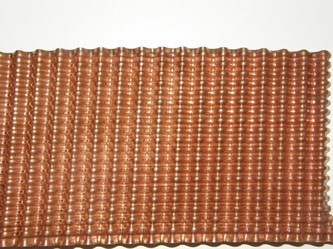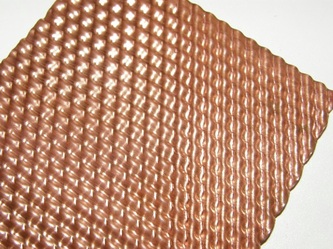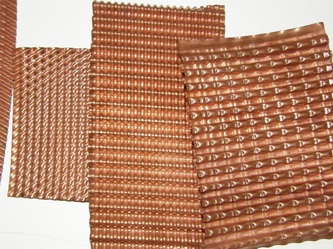I had not planned on taking that class but because I cancelled another one, I took this class instead only to find out about the hydraulic press. Afterwards I was pleaseantly surprised because I like the pendant I had made and I had learned two new techniques.
All of this was just prior to me taking classes with Deb. I was at that point were I knew I did not want to concentrate on jewelry; I wanted to learn silversmithing and was still looking for a teacher. I tucked these two techniques away only thinking about how they might be applied to jewelry and moved on.
Last month (November to be exact), I learned how to make a silver shibori bracelet. [Shibori is a Japanese term for several methods of dyeing cloth with a pattern by binding, stitching, folding, twisting, compressing it, or capping. Some of these methods are known in the West as tie-dye.] When the term shibori is applied to metal, it is a type of fold forming such that the folds are gentle giving the allusion of fabric.
I fell in love with my cuff bracelet and now I want to learn more about fold forming so I spent part of the weekend watching YouTube videos on fold forming; I Google-d images; I researched books; I read everything on Charles Lewton-Brain's website (http://brainpress.com/Foldforming.html); and then I ordered his book as well as a good quantity of thin gauged copper.
At the December 2nd Saturday, with Deb we discussed my bracelet, fold forming in general and then we went through a box of her fold forming experiment samples and Deb explained how she made some of them. Deb also had set up 2 metal corrugators made by her husband and I came home with some simple samples where I had used the 2 different corrugators alone and together which resulted in some very interesting textures. Yes, Virginia, corrugation is a type of micro-fold forming (See pictures below - remember you can click on the pictures to see a larger image).
With the new year around the corner, I hope to work my way through CL-B's fold forming book by doing a new fold every few weeks and then pondering some ideas of how to apply it to my work.
For your delight - here are some pictures of the corrugated samples I made. Click on any image to view it full sized





 RSS Feed
RSS Feed
